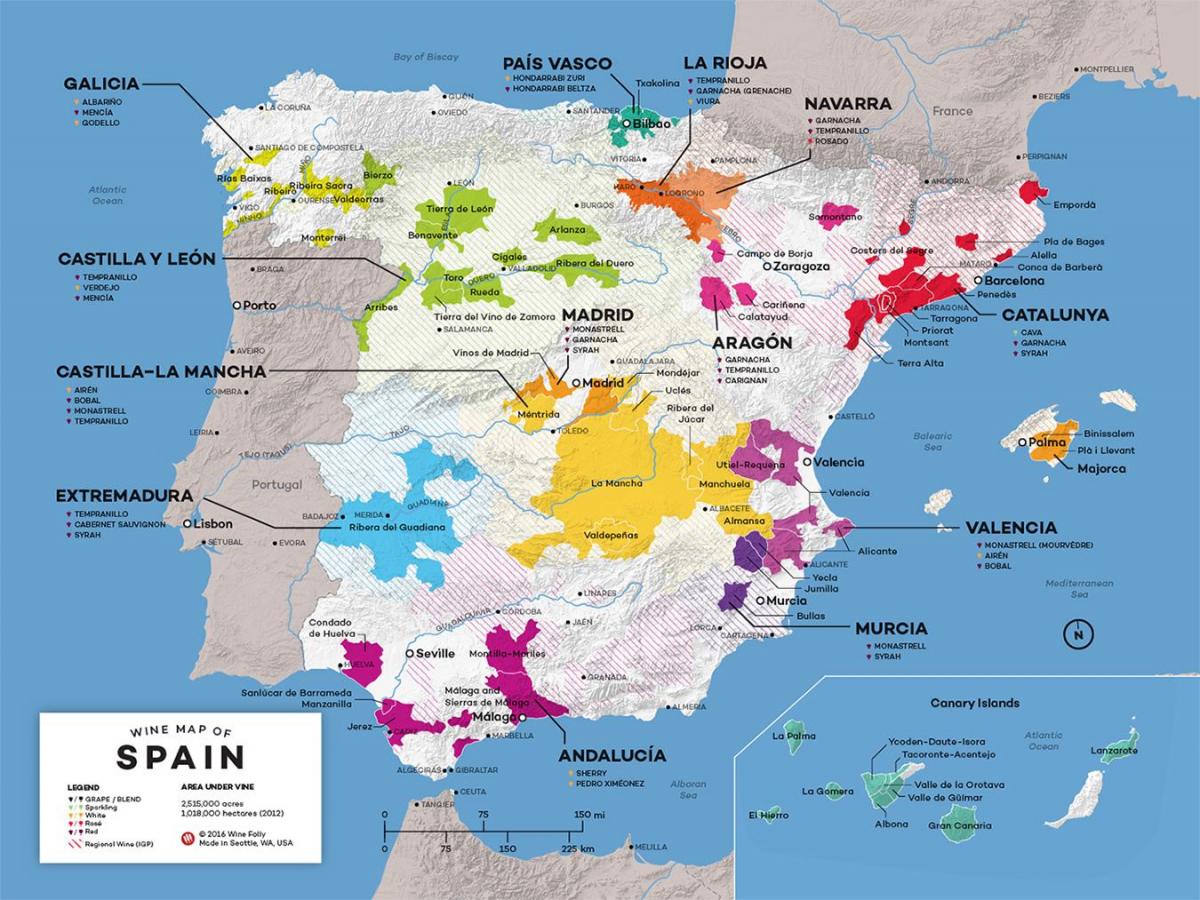search
Spain wine map
Wines of Spain map. Spain wine map (Southern Europe - Europe) to print. Spain wine map (Southern Europe - Europe) to download. Spanish wines are wines produced in the southwestern European country of Spain. Located on the Iberian Peninsula, Spain has over 2.9 million acres (over 1.17 million hectares) planted—making it the most widely planted wine producing nation but it is only the third largest producer of wine in the world, the largest being Italy and France as its shown in Spain wine map. This is due, in part, to the very low yields and wide spacing of the old vines planted on the dry, infertile soil found in many Spanish wine regions. The country is ninth in worldwide consumptions with Spaniards drinking, on average, 10.06 gallons (38 liters) a year.
Spain has an abundance of native grape varieties, with over 600 varieties planted throughout Spain though 80 percent of the country wine production is from only 20 grapes—including Tempranillo, Albariño, Garnacha, Palomino, Airen, Macabeo, Parellada, Xarel·lo, Cariñena and Monastrell as its mentioned in Spain wine map. Major Spanish wine regions include the Rioja and Ribera del Duero which is known for their Tempranillo production; Jerez, the home of the fortified wine Sherry; Rías Baixas in the northwest region of Galicia that is known for its white wines made from Albariño and Catalonia which includes the Cava and still wine producing regions of the Penedès as well the Priorat region.
One of the dominant geographical influences of Spanish viticulture is the vast plateau known as the Meseta Central that covers much of central Spain. From there flow to the sea several of Spain principal rivers that are at the heart of many Spanish wine regions. These include the eastward flowing Ebro river that runs through the Rioja and several Catalan wine regions; the Duero which flows westward through the Ribera del Duero region in Spain before crossing the border into Portugal Douro Valley which is at the heart of Port wine production; the Tajo which runs through the La Mancha region; Guadalquivir which flows into the Atlantic at the Sherry producing village of Sanlúcar de Barrameda as you can see in Spain wine map. In addition to the Meseta Central, several mountain ranges known as cordilleras serve to isolate and influence the climate of several Spanish wine regions.
Cantabrian Mountains that spur westward from the Pyrenees and protect regions like the Rioja from the rain and the cool of westerlies coming from the Bay of Biscay. The Cantabrian Mountains act as a rain shadow with the coastal regions of the Basque Country receiving an average of 59 inches (1,500 mm) while the winemaking region of Rioja, near Haro, around 62 miles (100 km) away receives only 18 inches (460 mm) as its shown in Spain wine map. In Galicia on the northwest coast, the region receives annual rainfall that ranges from 39 inches (990 mm) on the coast to 79 inches (2.0 m) near the mountainous border of Castile and León. The Cantabrian Mountains that spur westward from the Pyrenees and protect regions like the Rioja from the rain and the cool of westerlies coming from the Bay of Biscay.


